Book collector interests may be driven by a particular author or genre (science, art, modern firsts, exploration etc.), a particular illustrator or artist, a certain series of award winning books, fine bindings in book design, cover or dust jacket art; a printer of fine press books, incunabula or books printed during certain periods, movable parts or miniature books, inscribed, signed or advance review copies and the list goes on and on.
A book component that has recently picked up a great deal of followers thanks to fine press books and museum exhibits are the endpapers used in the binding process. Endpapers (end-papers or endleaves), are the double-sized, thick, strong paper which is folded, with one half pasted against an inside cover (the pastedown) and the other positioned to lead or trail the other sheets. The first free pages to the front of the book were originally designed to take up the strain of opening the covers of the book. As a cost-saving measure for cheaper editions, a binder may have also used waste material for the endpapers, instead of a clean sheet of paper or parchment. Today they are primarily constructed by pasting folded colored and white sheets together, to protect the text from the boards and counteract the pull of the cover on the boards.
From vellum, silken and marbled endpapers to pictorial, Dutch gilt and “Images Populaires” designs, endpaper collectors have maintained a progressively astute desire to hunt some of the offerings. Colored paper production techniques such as marbling paper had been practiced in the Islamic world and the Far East for some time becoming one of the chief means available for producing decorated endpapers, and later used in Europe beginning with the sixteenth century. The changes brought by the Industrial Revolution in the nineteenth century caused the diminution in hand bookbinding which also brought the extinction of the marbler’s art.
Beyond marbling, during the last century, a number of decorative endpaper works generated a great deal of interest resulting in the extinction of such copies from the market. A scarce Halcyon House edition from 1920, published and distributed by Blue Ribbon Books, was of Rockwell Kent‘s “Wilderness. A Journal of Quiet Adventure in Alaska.” This exhibits the best Kent drawing of this work on the endpapers. First printings through the fourth printing (1936) vanished from the market.
One of the most important children’s illustrated books of the twentieth century, the second book in the series of books by A.A. Milne for his son Christopher Robin Milne, is Winnie-the-Pooh. The endpapers, illustrated by Ernest H. Shepard (E.H. Shepard) show the map to the “100 Aker Wood.” The first state of the book which was first published by Methuen in 1926, complete, in good condition, trades for more than $3,000.
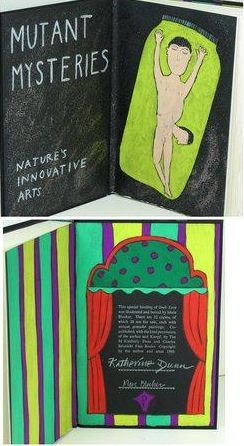 Among today’s fine press productions the most interesting items are collections of books with unique endpapers and works of art. The limited edition of Katherine Dunn’s Geek Love (Portland, 1989), features hand-painted endpapers. Several characters from the novel were sketched to create the hand-colored illustration on the front endpaper, most of which were duplicated at least 3 or 4 times in the limited production. The sheets of the Knopf/Seluzicki Fine Books first edition are bound in black cloth with unique gouache paintings on the endpapers signed by Dunn and by the artist, Mare Blocker in a total edition of 32, now selling above $1000.
Among today’s fine press productions the most interesting items are collections of books with unique endpapers and works of art. The limited edition of Katherine Dunn’s Geek Love (Portland, 1989), features hand-painted endpapers. Several characters from the novel were sketched to create the hand-colored illustration on the front endpaper, most of which were duplicated at least 3 or 4 times in the limited production. The sheets of the Knopf/Seluzicki Fine Books first edition are bound in black cloth with unique gouache paintings on the endpapers signed by Dunn and by the artist, Mare Blocker in a total edition of 32, now selling above $1000.
Next time you happen to open a book, take the time to notice the first thing you see, the nice drawing, the art, the map, the colorful pattern of the marbling on the front endpaper. It may have more to offer than a mere element of structural support. It could cause you to skip over the contents to the end of the book straight to the back end paper to double your enjoyment.
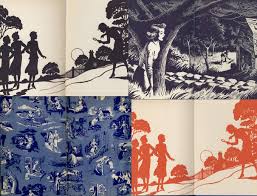
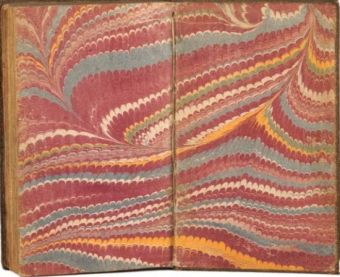
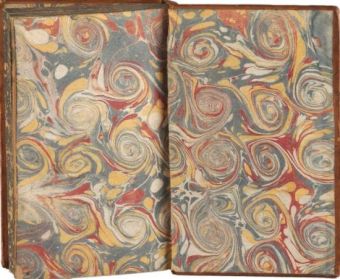
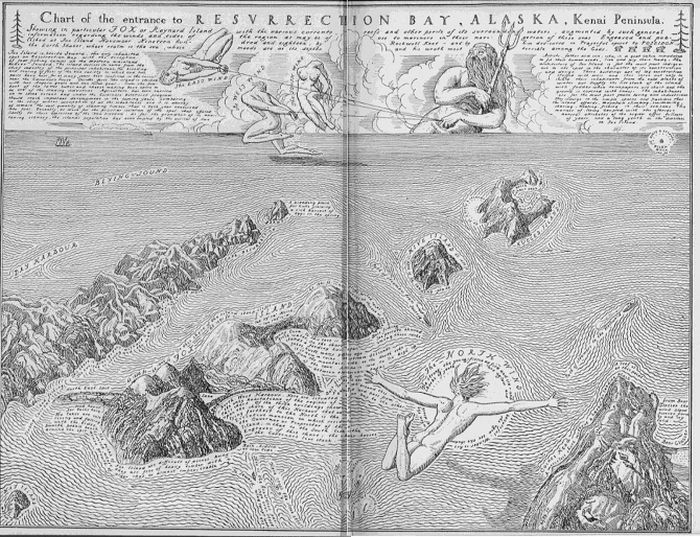
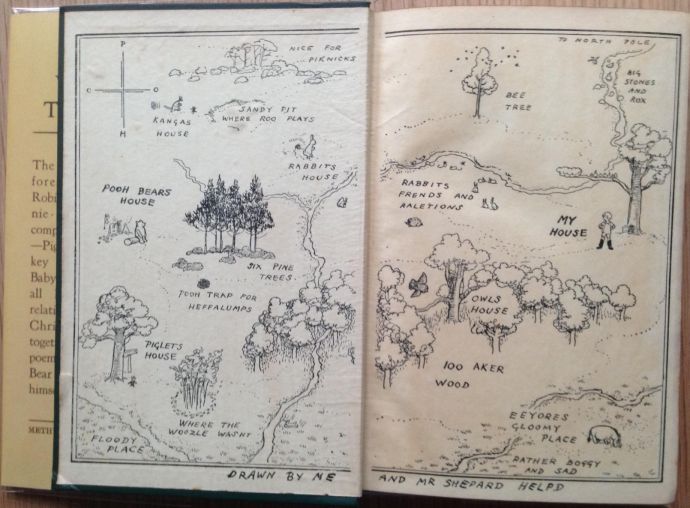
{ 1 comment… read it below or add one }
Thank you for this interesting article.
In my bookcollection I have often seen those decorative endpapers.
It is exciting and gives the book a special expression.
Best regards
Lars Birkmose
{ 1 trackback }